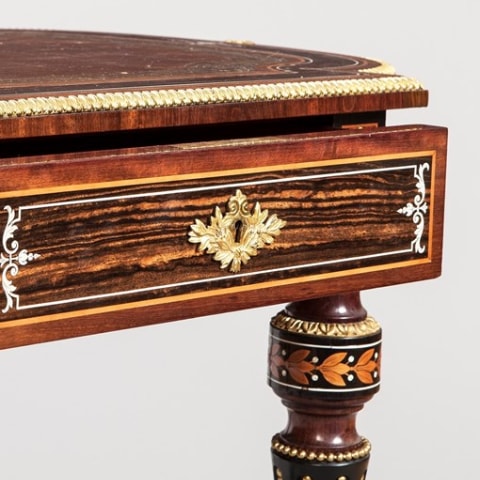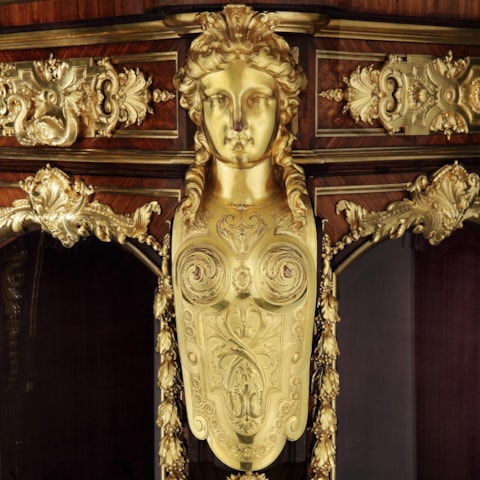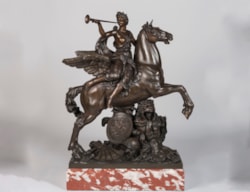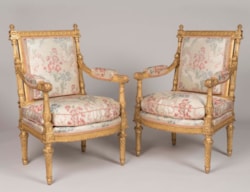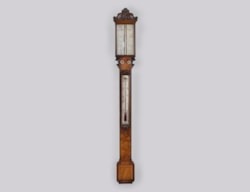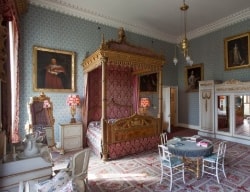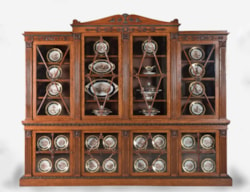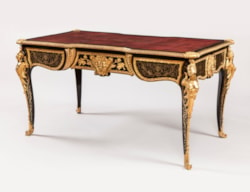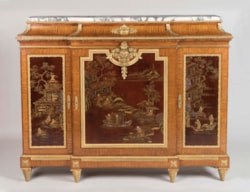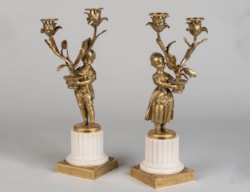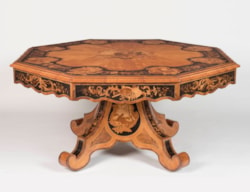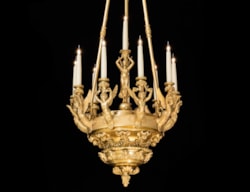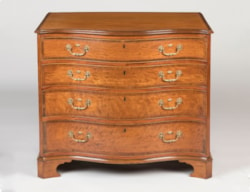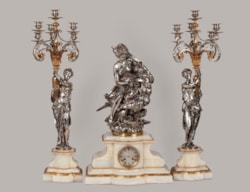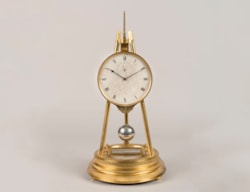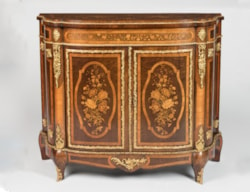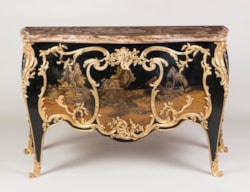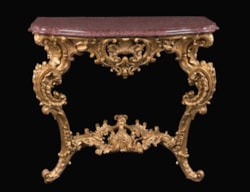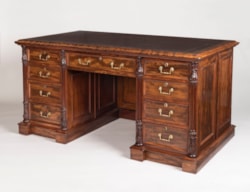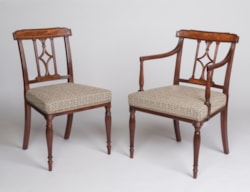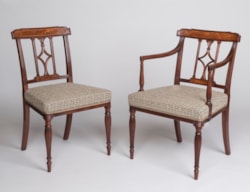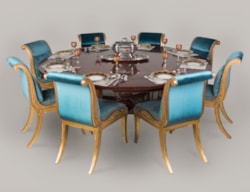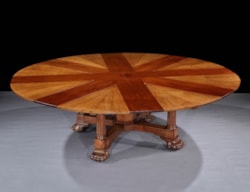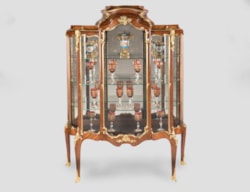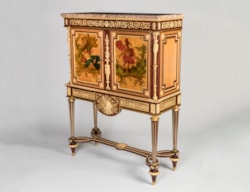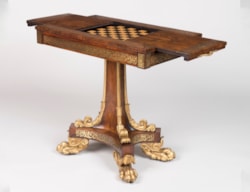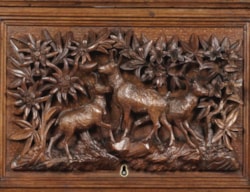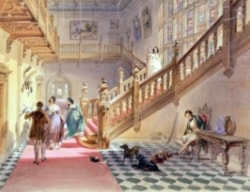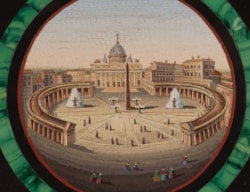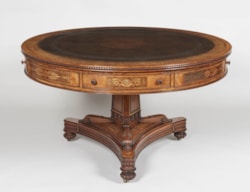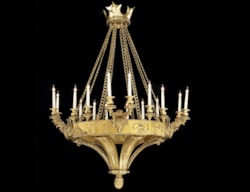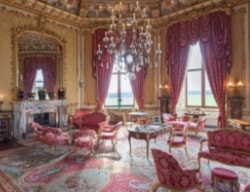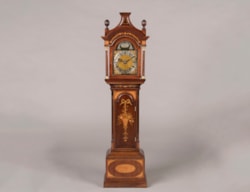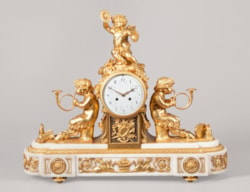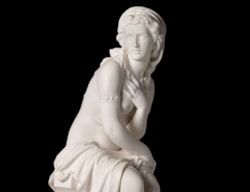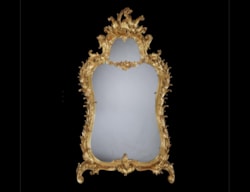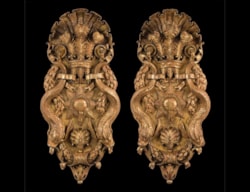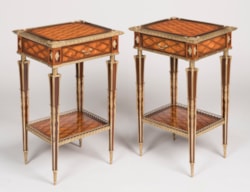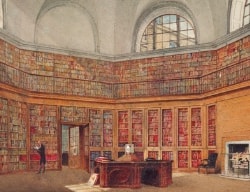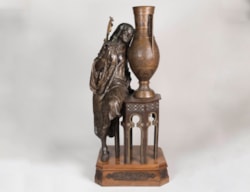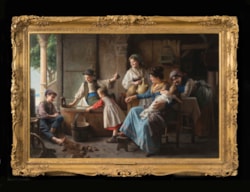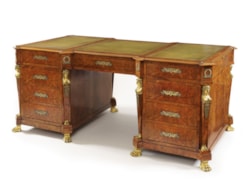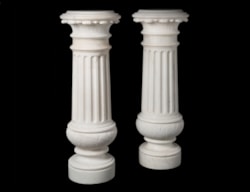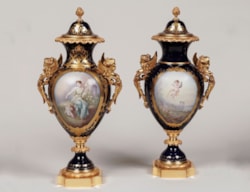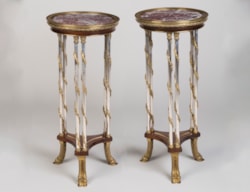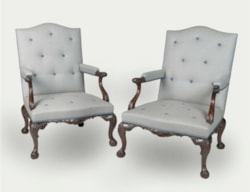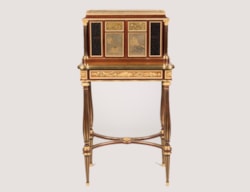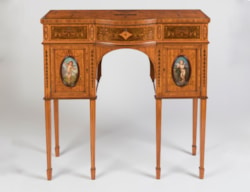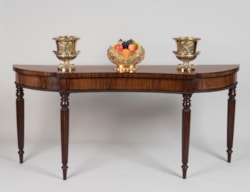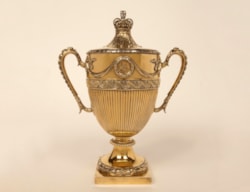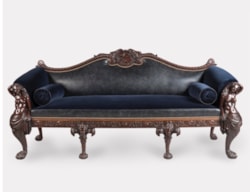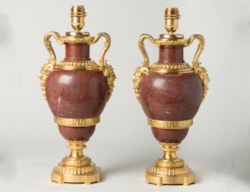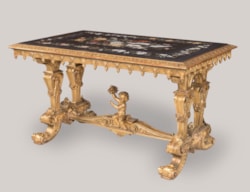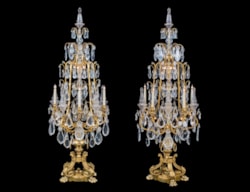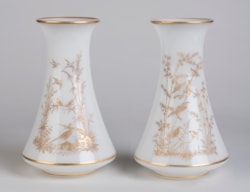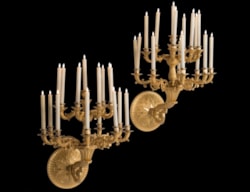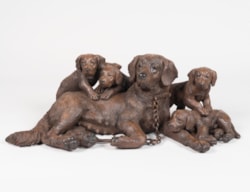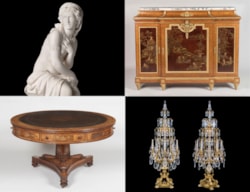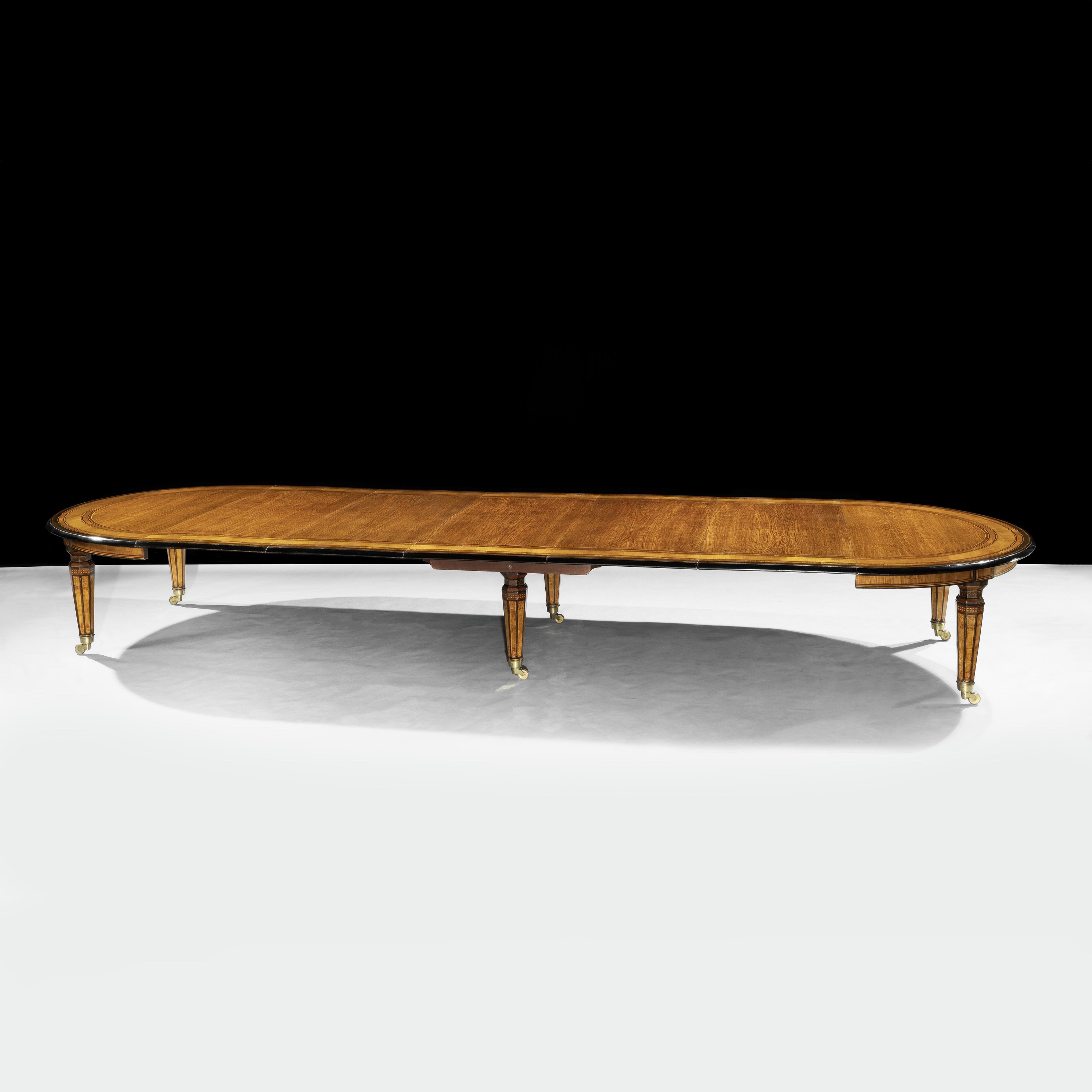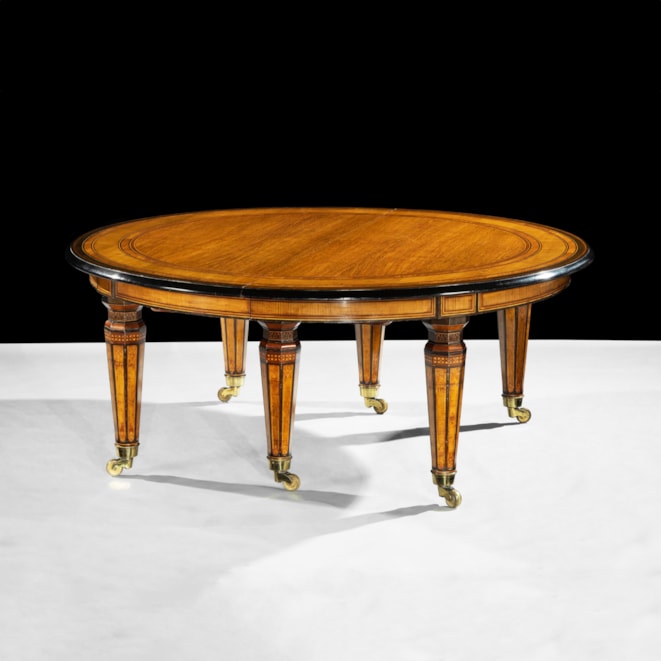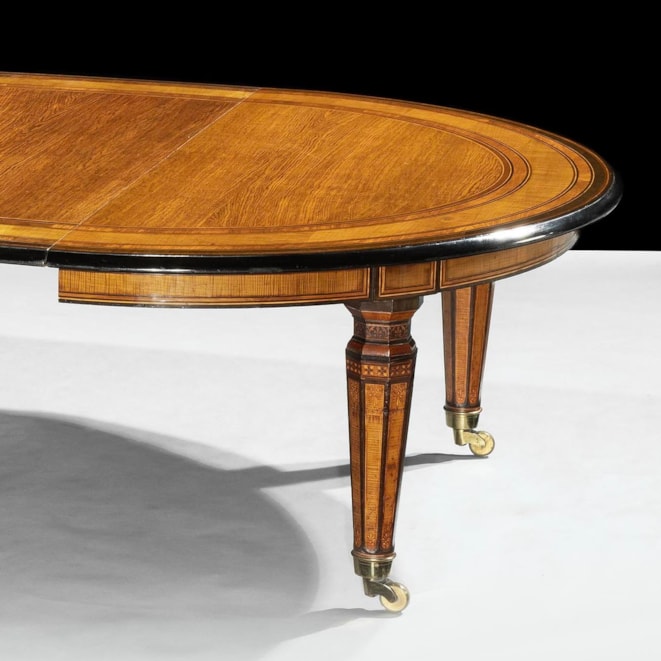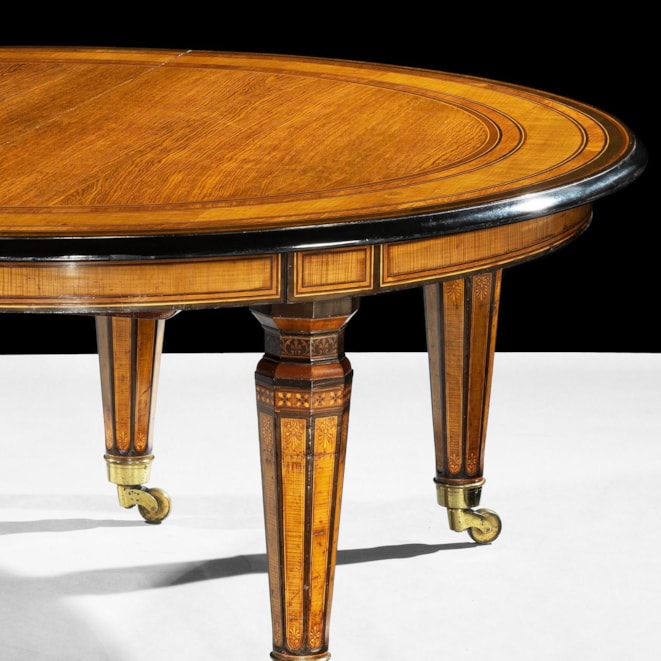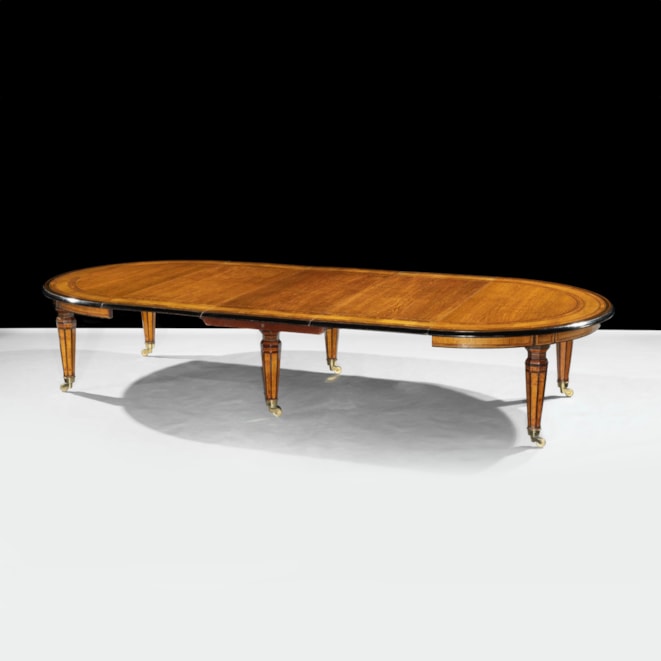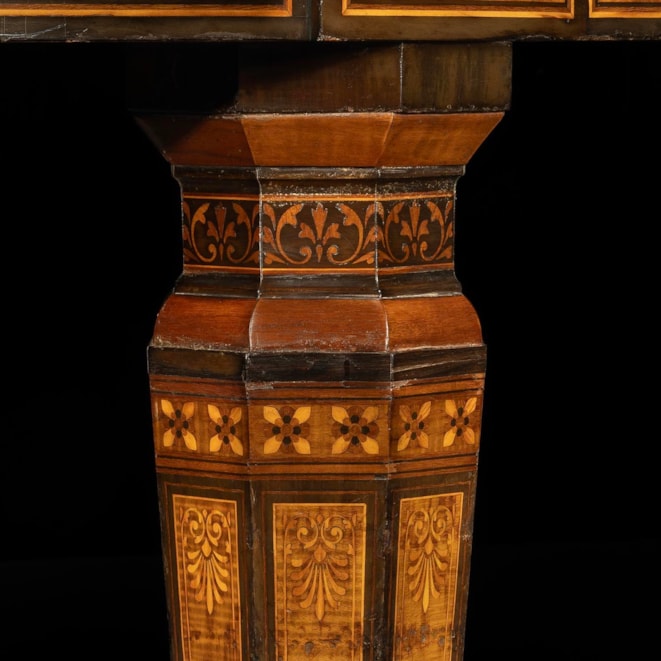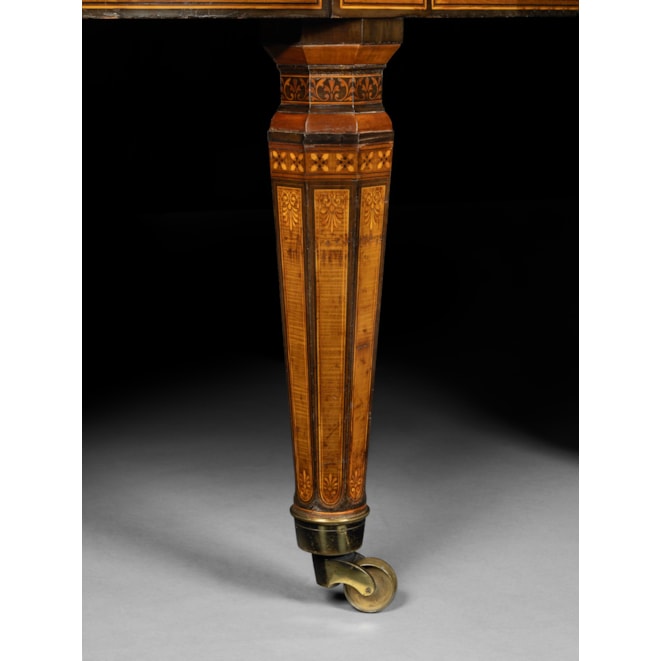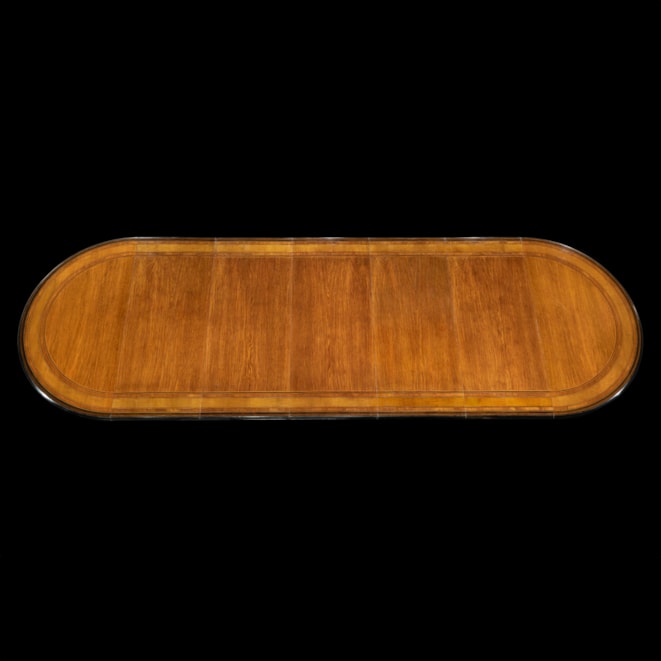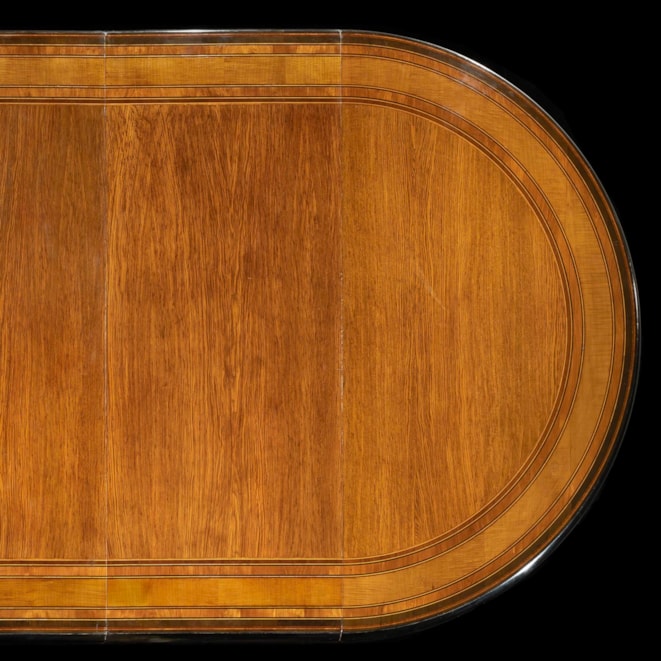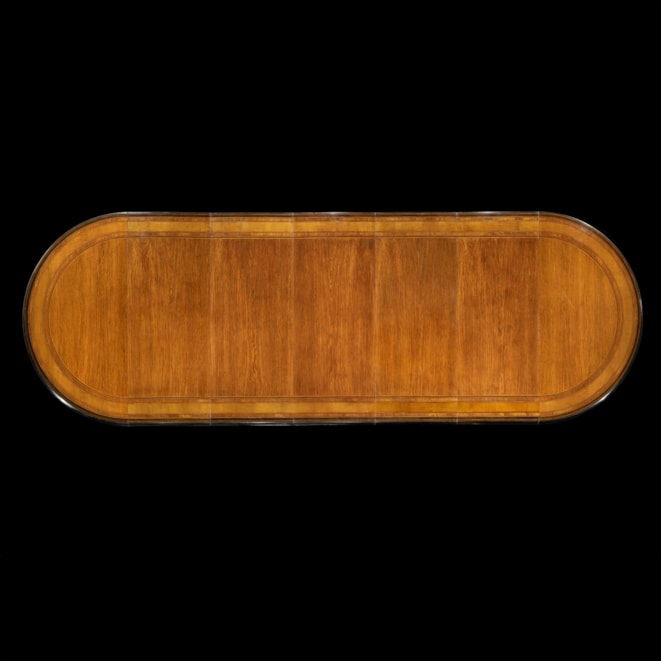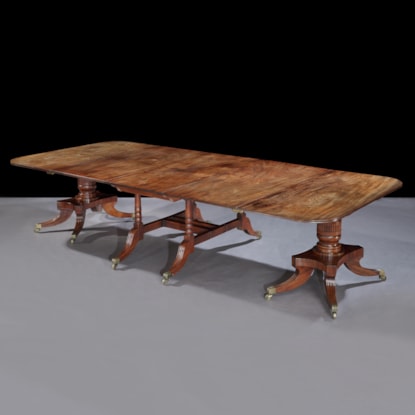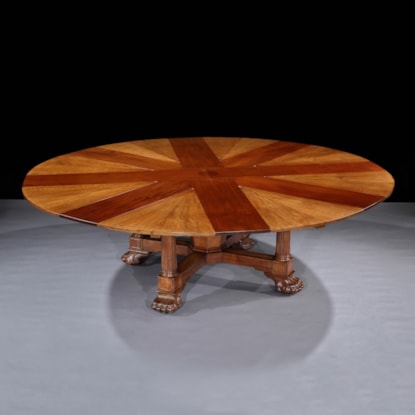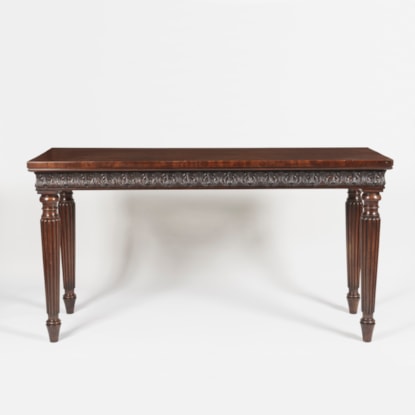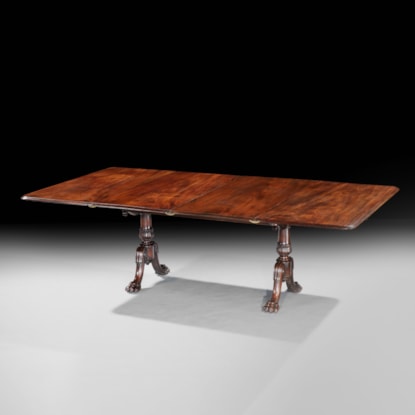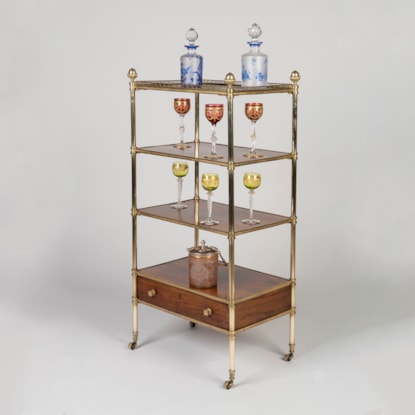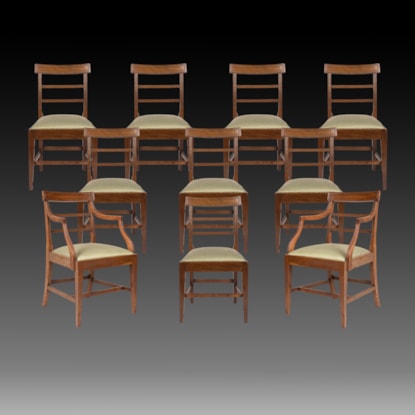An Extraordinary Extending Dining Table Attributed to Jackson & Graham
An Extraordinary Extending Dining Table Attributed to Jackson & Graham
Dimensions (fully extended): H: 29 in / 73 cm | W: 72 in / 182 cm | D: 210.5 in / 534 cm
An Extraordinary Extending Dining Table
Attributed to Jackson & Graham
The circular top, which can be extended to accommodate from 8 to 22 guests by the addition of 5 leaves, all of oak, features a moulded ebonised edge and inlaid banded borders of harewood, satiné crossbanding and boxwood stringing. Supported on six octagonal tapered legs, each inlaid with intricate anthemiae, foliate banding, and geometric flowers in conforming choice specimen woods. The legs having brass castors stamped 'Cope/ Collinson/ Patent,' while the table clamps bear the mark 'Cope Collinson/ Jan 2 1840.' A brass inventory plaque '526' to the underside.
English, circa 1870
See full provenance for additional details.
Provenance:
Likely commissioned for the Dining Room at The Towers, Didsbury, by Daniel Adamson;
By descent, remaining at The Towers when it was sold in 1920 to the
British Cotton Industry Research Association, later known as the Shirley Institute
Private Collection, UK, 1960s
Thence by family descent
Jackson & Graham
Crafted from a carefully curated selection of hardwoods, chosen for their contrasting colours and grains, and accented with ebonised moulding, the table's design is a testament to the influence of Owen Jones. Jones' seminal work, 'The Grammar of Ornament,' published in 1856, served as a guiding light for the decorative arts of the period. The close collaboration between Jones and Jackson & Graham is evident in the innovative designs and meticulous attention to detail found in this table.
The firm of Jackson & Graham established in 1836 by Thomas Jackson and Peter Graham at 37 Oxford Street London, and for the next fifty years produced predominately high quality furniture and represented Britain at many of the international exhibitions. Their clients included Queen Victoria, Napoleon III, the Grand Khedive at Cairo and the King of Siam. They were particularly noted for their fine marquetry work, the use of Wedgwood plaques, ivory inlay, rare woods, and fine casting of bronze mounts. They engaged the leading designers of the period, inter alia, Owen Jones, Bruce Talbert, Alfred Lorimer and Eugene Prignot. In the mid 1850's the workforce was recorded as 250, and by 1875, the company was employing 600 workers.
They were feted exhibitors at many of the Great Exhibitions of the Nineteenth century, and frequent prize winners. At the Paris International Exhibition of 1878, the furniture jury noted of them ' the workmanship is so perfect that even with the aid of a magnifying glass scarcely the slightest imperfection is to be found'. In 1885 the company was absorbed by Collinson and Lock, who continued their standard of excellence.
The Towers, Didsbury
The Towers, Didsbury, is a grand mansion designed by Thomas Worthington in the German Gothic style, near Manchester. Shortly after its completion, it was bought by Daniel Adamson, the engineer who proposed the building of the Manchester Ship Canal. As noted in the 'Building News' of 1873, the dining room measured an ideal 30x20 feet, and could accommodate the table comfortably and its ±22 guests. In 1920, the house was sold to the British Cotton Industry Research Association, later known as the Shirley Institute.
It was in the boardroom of the Shirley Institute, formerly the dining room, where this magnificent table was used. In the 1960s, the table was acquired by the father of the former owner, marking a new chapter in its storied history. The table's impressive size, extending to nearly five and a half metres, suggests that it likely remained with the house when it was sold in 1920.
You may also like

 Vip access
Vip access

 Favourites
Favourites






